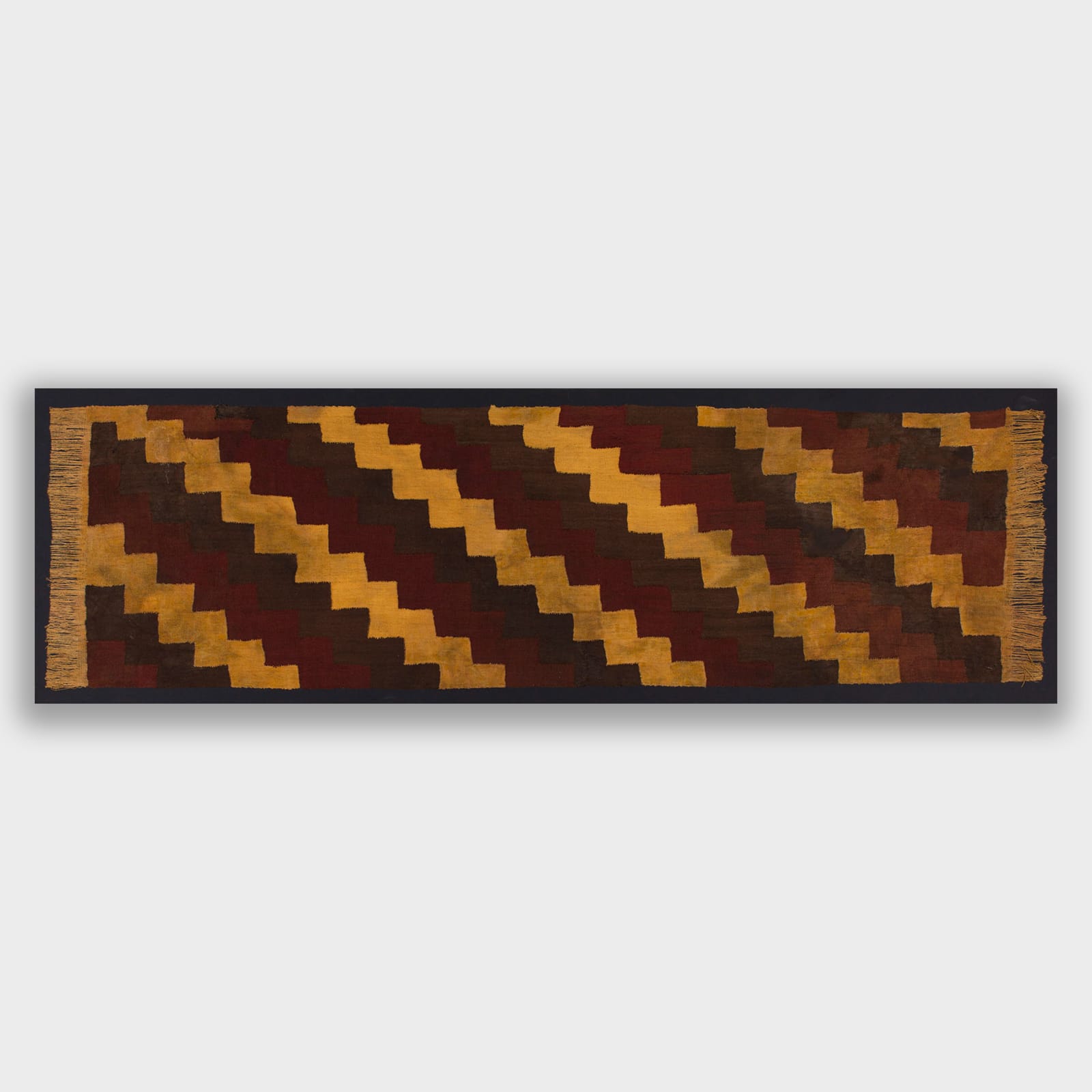

Tiwanako/Huari
25'9" x 84" in.
Textiles in the Wari period are the ultimate expression of abstraction. This stunning and monumental example of bold Huari textile aesthetics exemplifies this culture’s technical virtuosity in expressing abstractly the beliefs that man has the power to create order, transcend space and time in a nonrepresentative colour field of geometrics.
Scaffold weave--as is demonstrated in this piece--is one of the most unusual weaving techniques in the world and existed only in the Andean region of South America. The complexity of the woven textiles in this ancient world is still fascinating scholars, weavers and textile lovers today. Sure more important than the surface decoration.
For, surely accustomed as we are with our late XXth century modes of perception freed from representational conventions, the visual impact of this cloth and those of the following group cannot fail to resonate with the archetypal heritage of abstraction inherent within us all.
The sublime beauty of this minimal aesthetics resonates with numerous modern attempts in abstract arts, from the Bauhaus master weaver Anni Albers’ “Wallhanging series” in the 1930s, the American Abstract Expressionist Newman’s “Adam (1951-52), to renowned painters in the far east such as the Dansaekua generation.
Many related examples are in the Berlin museums much visited for inspirations by the Bauhaus founders, Johannes Itten, Josef Albers and Paul Klee. The Anni and Josef Albers personal collection also contain numerous related examples.
Join our mailing list
* denotes required fields
We will process the personal data you have supplied in accordance with our privacy policy (available on request). You can unsubscribe or change your preferences at any time by clicking the link in our emails.

